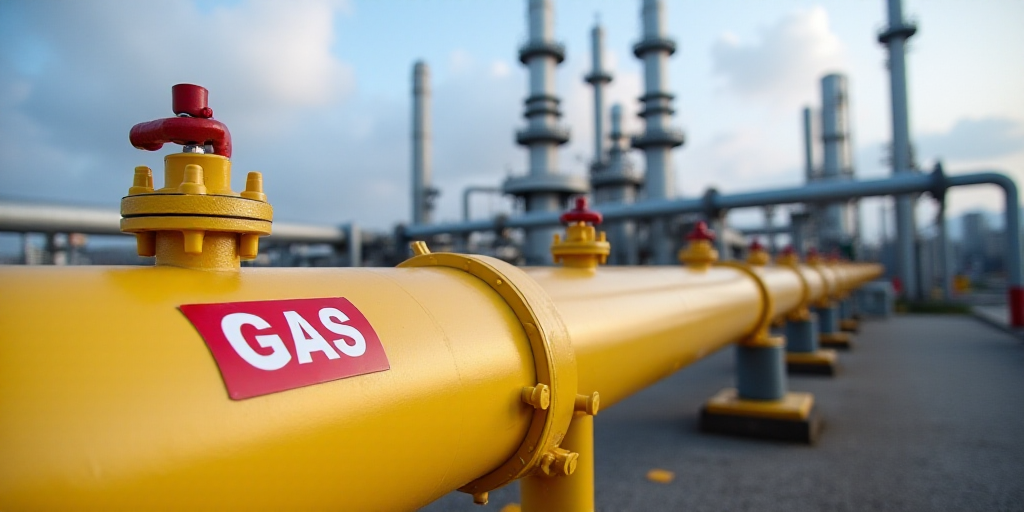Background on Natural Gas and Its Importance
Natural gas is a crucial energy source, primarily used for heating and electricity generation in residential, commercial, and industrial sectors. It plays a significant role in the United States’ energy mix due to its abundance and relatively lower carbon emissions compared to coal. The natural gas market is sensitive to weather patterns, as demand fluctuates with temperature changes.
Recent Market Developments
On Thursday, natural gas prices reached their highest point in ten weeks, trading at $4 per million British thermal units (BTU) for July delivery. This surge is primarily attributed to the intense heat experienced in major markets, which has boosted demand for air conditioning and, consequently, increased the need for natural gas to power electricity generation.
Weather Forecast and Its Impact
The National Weather Service has issued a heat advisory for the eastern markets, warning of extreme heat expected to hit these regions over the weekend. This heatwave will span from the Midwestern plains to the eastern United States, with temperatures projected to reach between 40 and 43 degrees Celsius in much of the Midwest. Such extreme heat conditions are likely to further elevate demand for air conditioning and, in turn, natural gas.
Inventory Levels
According to the Energy Information Administration’s (EIA) weekly storage report, published a day earlier than usual due to the June 19 holiday, U.S. natural gas inventories increased by 95 billion cubic feet last week. This increase was close to expectations but marked the first time in eight weeks that injections fell below 100 billion cubic feet.
As of the report, total inventories stood at 2.8 trillion cubic feet, which is 6.1% above the five-year average.
Key Questions and Answers
- What factors are driving the recent surge in natural gas prices? The primary driver is the increased demand for air conditioning due to intense heat in major markets.
- How does weather affect natural gas prices? Weather patterns significantly influence natural gas demand, as warmer temperatures boost the need for cooling and electricity generation.
- What is the current state of U.S. natural gas inventories? As per the EIA’s latest report, inventories increased by 95 billion cubic feet last week, totaling 2.8 trillion cubic feet—6.1% above the five-year average.
- What does the National Weather Service heat advisory imply for natural gas demand? The advisory suggests that extreme heat will further elevate demand for air conditioning, thereby increasing the need for natural gas to power electricity generation.






